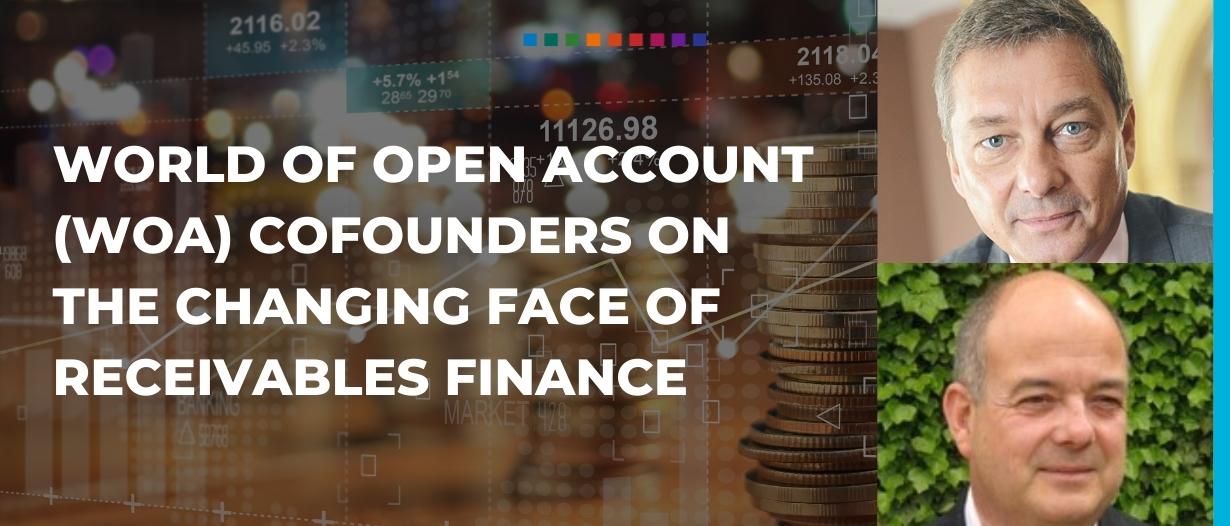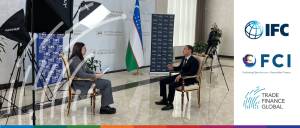The world of receivables finance has changed a lot in the past several years.
From increased digitalisation to geopolitical conflict and pandemic-enduced lockdowns, several new factors have been driving the conversation and forcing change.
To learn more about how this landscape is changing TFG’s Annie Kovacevic (AK) sat down with World of Open Account (WOA) cofounders John Brehcist (JB) and Erik Timmermans (ET).
AK: Can you provide a brief introduction to the World of Open Account (WOA)
JB: Yes, certainly! WOA is the digital networking and learning community for businesses and professionals involved or interested in open account receivables finance (such as factoring, invoice finance, trade finance, supply chain finance, service providers, investors…)
What makes us different? We are open and accessible to all. Collaboration-based and digitally driven, we are focused on innovation and sharing knowledge. No silos, and completely non-elitist.
AK: You will be hosting a WOA convention this year. What is the background of the convention and why is it important for the industry?
ET: While we are principally digital, we also recognise there is simply no substitute for physically getting together to discuss and explore what is happening in our Industry.
Yes, you can pick up facts and figures on a teleconference meeting, but you can’t pick up what people really feel and think or what is critical to their agenda.
So this convention is important because it gives the chance for a full spectrum of stakeholders to get together and share their knowledge and expertise in an inclusive, cooperative environment.
AK: Let’s dive into some more specific themes being discussed at the convention. How has receivables finance fared and evolved over the past 2 years, given the backdrop of the pandemic, geopolitics, and commodity price hike?
JB: Overall as we know it’s been a rollercoaster; down heavily in 2020, recovering strongly in 2021. But for this year? 2022 will clearly be affected by the economic performance resulting from these drivers.
We will be hosting a C-suite panel session that will look to identify the impacts. The discussion will cover the effects of conflict, inflation, recession, commodity, fuel, and energy prices.
In addition to this, the event will examine the relationship between GDP growth and receivables finance growth and what regional industry performance variations are evident and what is driving them.
Given the importance of non-recourse business, we shall also investigate how the trade insurance industry is reacting to the environment and the impact on non-recourse business.
AK: What role has digitisation played in the receivables finance sector?
ET: Digitisation is one of the principal disrupting influences in the industry right now, affecting a range of issues like KYC, onboarding speed, risk assessment, and fraud reduction.
We will be investigating the evolution of “platformification” and its role in embedded finance and buy now, pay later (BNPL) applications.
We will also look at the latest developments in blockchain and e-invoicing; their evolution and the latest impact analysis.
Cryptocurrency acceptance and sustainability also raise questions as to whether they will remain high-risk virtual reality or they will transition to everyday real-world finance.
Digitisation is happening at apace, but it can be unclear how regulation and legislation are keeping pace. To help gain this visibility, we will look at how the authorities are responding.

AK: Leading on from this, AI and machine learning solutions have been instrumental in reducing risks within the supply chain. How might this help with factoring specifically?
JB: Applications include credit risk, liquidity management, and the setting of credit limits.
A convention session will share the knowledge and experience of a leading provider that highlights the possibilities of AI and ML, by applying them to clients’ data with a focus on the payment experiences of debtors.
AK: Looking towards the future, in what way will innovation aid new cross-border receivables finance models?
ET: Cross-border receivables finance models haven’t really changed much in recent years; they are seller-centric, complex, message-based, bureaucratic, and expensive.
This reflects that, despite all the noise made by the providers of such services, volumes remain very small compared to the overall global receivables finance market.
At this convention, we will be sharing a significant reform in cross-border financing that can make it much more attractive and cost-effective, a model we believe is more attractive and scalable.
The model combines the best of both worlds of a seller- and buyer-centric approach and will be of particular interest for Asian non-bank players who will be able to offer export factoring into Europe at competitive rates.
AK: How do you think that ESG reforms will impact the receivables industry?
JB: We recognise that there is currently a range of opinion regarding ESG, from non-believers that see it as virtue signalling or greenwashing, to evangelists that consider it an essential driver of modern business.
We will have a presentation from a leading observer to launch a discussion on the state of play in ESG and the financing of international trade, including supply chain finance.
The presentation will balance the fundamentals of ESG and sustainability with a commercial view and consideration of the emerging regulatory and policy space.
It’s going to be a lively debate for sure!
AK: How available are factoring and receivables finance products to SME customers – can we improve this?
ET: All the research points to the fact that, even in the most developed markets, there are many SMEs that don’t use these solutions, either because of a lack of awareness or of understanding.
Despite efforts, in many markets, this situation has proved hard to change but there is massive potential still to increase awareness and uptake.
The conference is the ideal venue for delegates to discuss what works and makes a difference to perception and uptake in their own markets.
AK: What are the largest trends you expect to take place in the next 5 years within factoring and receivables?
JB: We see the future for factoring and receivables finance being as positive as it has been at any time since we starting working in the space 35 years ago!
At the same time, the environment is changing rapidly.
The way the solutions are delivered will continue to evolve rapidly, and the developing range of technology that supports them means that there will be greater integration within the supply chain from beginning to end.
Some traditional manual products may be lost, but new solutions will take their place.
Don’t take our word for it and don’t miss out!
Come to the convention to share your views with the many industry thought leaders who will be there.
That way you can help actively drive the industry agenda; your voice is an essential part of the debate!





























